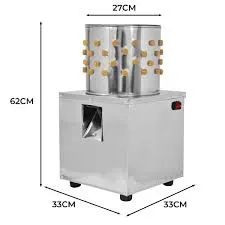Cellulose-based Evaporative Cooling Pads for Enhanced Energy Efficiency and Comfort
Dec . 30, 2024 07:44 Back to list
Cellulose-based Evaporative Cooling Pads for Enhanced Energy Efficiency and Comfort
The Role of Cellulose in Evaporative Cooling Pads
Evaporative cooling is a widely used method to reduce ambient temperatures, particularly in areas with low humidity levels. One of the essential components that contribute to the efficiency of evaporative cooling systems is the cooling pad. Among various types of materials used for this purpose, cellulose has gained popularity due to its unique properties and environmental benefits.
Understanding Evaporative Cooling
Evaporative cooling works on the simple principle of water evaporation. As water evaporates, it absorbs heat from the surrounding air, resulting in a drop in temperature. This process is particularly effective in dry climates where the air has a lower moisture content. By passing hot air through a damp medium, such as a cooling pad, the air temperature can be significantly lowered before it enters the living or working space.
The Importance of Cooling Pads
Cooling pads play a crucial role in the evaporative cooling process. They serve as the medium through which air passes to absorb moisture. The effectiveness of a cooling pad depends on various factors, including material composition, thickness, and surface area. Among the materials used for cooling pads, cellulose stands out due to its excellent moisture retention properties and biodegradability.
Advantages of Cellulose Cooling Pads
1. High Water Absorption Capacity Cellulose is known for its high surface area and porous structure, allowing it to hold substantial amounts of water. This characteristic ensures that as air passes through the pad, it picks up enough moisture to create a significant cooling effect.
cellulose evaporative cooling pad

2. Biodegradability and Sustainability In a world increasingly concerned about environmental issues, cellulose cooling pads offer an eco-friendly alternative. Cellulose is derived from plant fibers, making it biodegradable and reducing the environmental impact typically associated with synthetic materials. When disposed of, cellulose breaks down naturally, adding nutrients back into the soil.
3. Energy Efficiency The use of cellulose in evaporative cooling pads contributes to energy savings. By providing effective cooling without the need for refrigerants or significant electrical energy consumption, these cooling systems are not only cost-effective but also reduce the carbon footprint associated with air conditioning systems.
4. Durability and Longevity Properly treated cellulose cooling pads can last multiple seasons. Unlike some materials that degrade quickly with moisture exposure, cellulose can withstand repeated wetting and drying cycles, maintaining its structural integrity and performance over time.
Maintenance of Cellulose Cooling Pads
To ensure optimal performance of cellulose cooling pads, routine maintenance is necessary. Regular cleaning is vital to prevent the buildup of algae and other contaminants that can hinder moisture absorption and airflow. It is also essential to monitor the water saturation levels in the pads, as overly saturated pads may not offer effective cooling.
Conclusion
Cellulose evaporative cooling pads represent a sustainable, efficient, and environmentally friendly solution for cooling needs. With their high moisture retention capabilities, biodegradability, and energy efficiency, cellulose pads are drawing attention from both consumers and manufacturers alike. As global temperatures rise and the demand for cost-effective cooling solutions increases, cellulose cooling pads are set to play a critical role in achieving comfortable indoor environments while minimizing environmental impact.
In summary, the integration of cellulose into evaporative cooling systems illustrates a perfect blend of innovation and sustainability, promising to address both cooling needs and ecological concerns in a rapidly changing world.
-
Hot Sale 24 & 18 Door Rabbit Cages - Premium Breeding Solutions
NewsJul.25,2025
-
Automatic Feeding Line System Pan Feeder Nipple Drinker - Anping County Yize Metal Products Co., Ltd.
NewsJul.21,2025
-
Automatic Feeding Line System Pan Feeder Nipple Drinker - Anping County Yize Metal Products Co., Ltd.
NewsJul.21,2025
-
Automatic Feeding Line System - Anping Yize | Precision & Nipple
NewsJul.21,2025
-
Automatic Feeding Line System - Anping Yize | Precision & Nipple
NewsJul.21,2025
-
Automatic Feeding Line System-Anping County Yize Metal Products Co., Ltd.|Efficient Feed Distribution&Customized Animal Farming Solutions
NewsJul.21,2025






